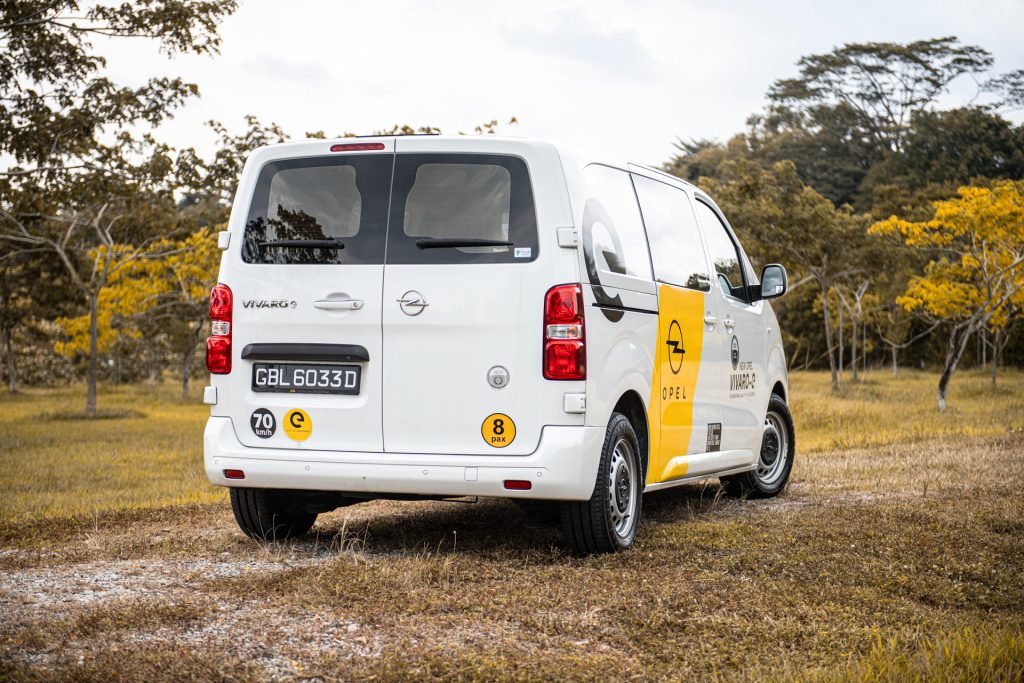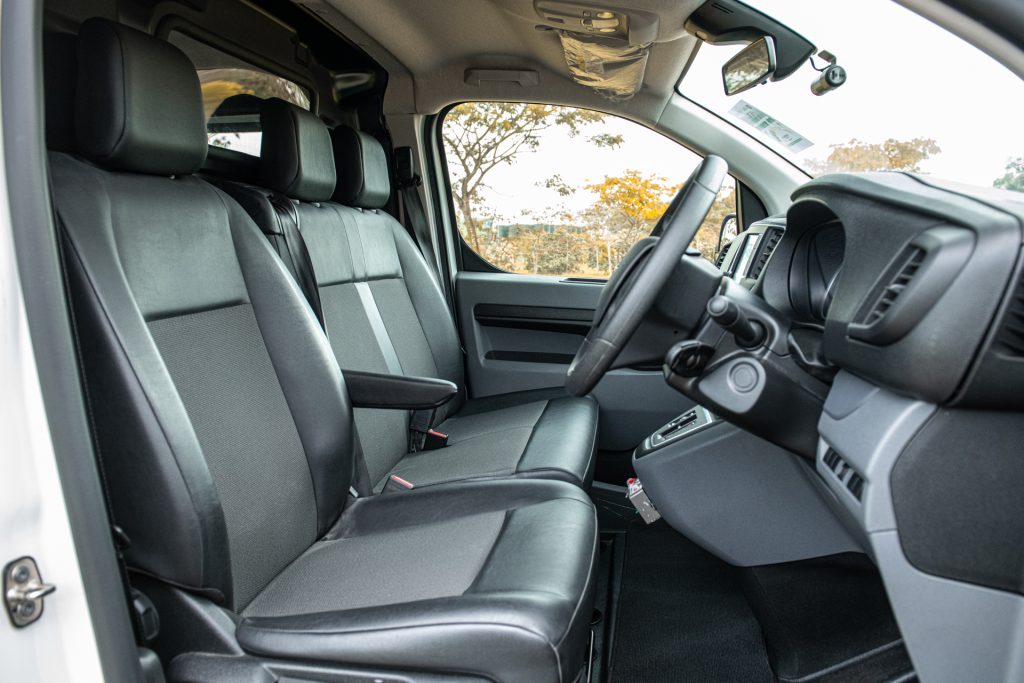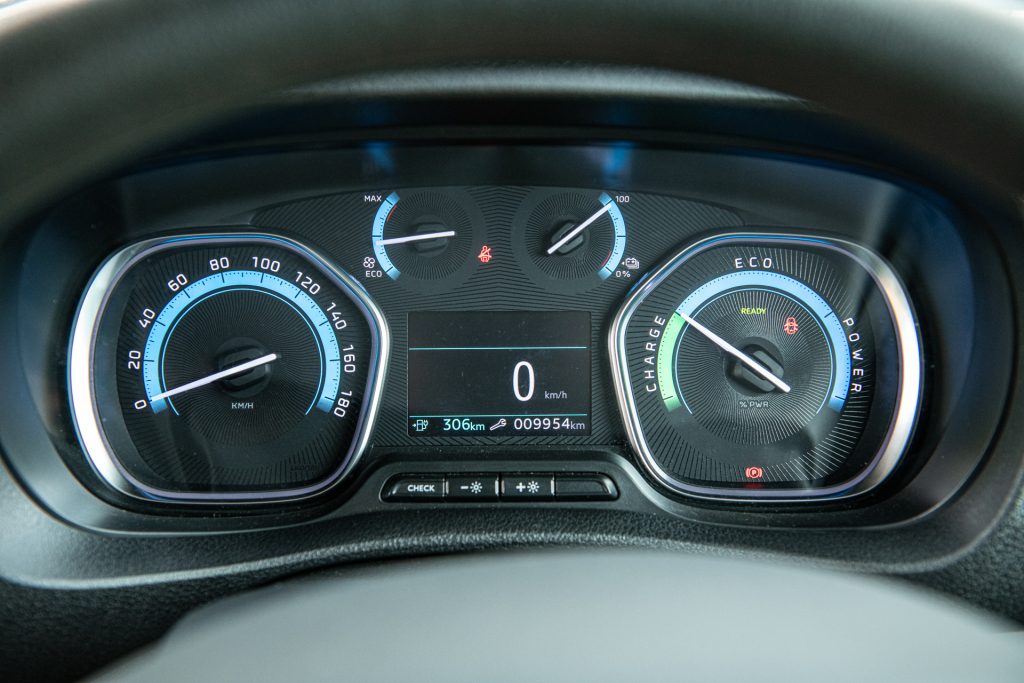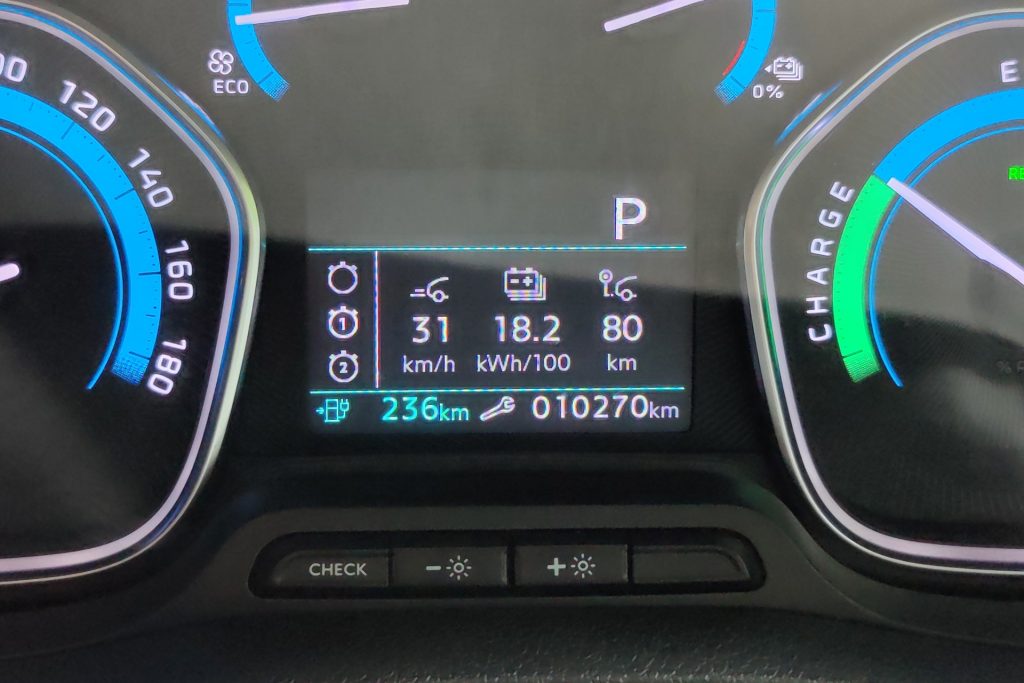Vans can be brisk and lively too.
I realize the irony of someone named ‘Vivek’ writing an article with its title containing the word ‘Vivace’, but just… just.. just run with it for now okay? Electric vans are becoming more commonplace on our streets today, and with good reason. Take the Opel Vivaro-e for example. It’s quiet, comfortable and peppy. More on the pep later on.
The Vivaro-e’s closest competitor is the Citroën e-Dispatch, which is pretty much the same van from parent group Stellantis at around $4,000 more in price. The Mercedes-Benz eVito 112 Long is a little larger and priced at around $45,000 more but with a smaller 60kWh battery pack as compared to the Vivaro-e’s 75kWh energy storage unit. This means the Vivaro-e is the most affordable electric van of the trio.
outside.
The first items of note are the LED daytime running lights and front fog lamps embedded in the front bumper’s lower black trim, offering a more modern touch and additional illumination in inclement driving conditions respectively. The grille is also a nice touch, with the width-wise bar seeming to merge into the inner headlight surround on either side. Simple, neat yet classy.
One needs to remain cognizant of the Vivaro-e’s dimensions. At 4,959mm long, drive it akin to a long-wheelbase luxury vehicle and you’ll be fine. It will fit in multistorey HDB carparks with a minimum height limit of 1.9 metres with its 1,902mm height, and its width of 1,920mm will see it fit snugly into a parking spot.
Rearward visibility is somewhat available owing to a glass panel in the bulkhead partition inside the van, but most of the time, those large wing mirrors will be the primary way to keep track of vehicles and objects behind. They do a good job of this and the test van also had tiny blind spot mirrors stuck onto each wing mirror for better kerbside visibility – a feature I appreciated greatly when manoeuvring the Vivaro-e as close as possible to kerbs to give Mom an easier time getting in and out of the passenger seat.

16-inch steel wheels are shod with commercial-vehicle 215/65R16C Michelin Agilis 3 rubber, and this means one does not have to worry about the risk of inadvertently grinding up expensive alloy rims when parking as close as possible to a kerb either.




inside.
Now we come to the business end of the Vivaro-e – 6.1 cubic metres or 6,100 litres of cargo compartment, which is rated for a maximum of 1,000kg of goods haulage. The rear doors open outwards, through which palletised cargo can be loaded via forklift.
The side doors slide open wide allowing cargo to be manually loaded and unloaded. However, this test drive was done with the van unladen, since neither Sean nor I know (yet) how to operate a forklift.




Cargo operations completed, the next order for the van driver and assistant is to get in and leave for the next destination. This is made easy by the doors that open wide, and door pockets that can swallow large water bottles for that refreshing drink before driving off.
A shallow step makes ingress and egress relatively simple, although a grab handle at the A-pillar would have been appreciated. Not an issue for me at 1.82 metres tall because all I had to do was literally have one foot on the ground while sliding my bottom onto the driver’s seat bottom with my longer legs.
However, Mom, who’s a petite 1.52-metre tall and 79 years old had to use this step to rather easily get in and out of the passenger’s seat from the kerbside, although she did lament the lack of the aforementioned grab handle when entering and exiting at road level.

The driver’s seat features sufficient adjustment fore, aft and for backrest tilt, although with my driving position with the seat all the way back, the backrest had to be upright since it was right against the bulkhead partition. No matter though, for the seat is comfortable enough.

The steering wheel falls nicely to hand, and can also be adjusted for reach and rake. Analogue instruments with a digital display are simple and clearly laid out. Automatic headlights and wipers are standard fit, as is cruise control of the non-adaptive variety for those pesky 70km/h average speed camera zones.
The infotainment features Apple CarPlay and Android Auto for smartphone connectivity, and the audio system, although basic, plays nice and loud without being tiresome. Bluetooth connectivity is also here, although using it requires a bit of a think. One needs to click the ‘phone’ button on the infotainment with one’s phone on pairing mode and click through in the subsequent screen to pair a new device. Removing the pairing required the same screen to be brought up with the phone disconnected.
Physical climate controls are a welcome relief in this day and age of touchscreen everything, and there are a couple of 12-volt sockets for powering devices and many cubbyholes for storage, including a secret compartment under the passenger’s seat.










Though simple, everything in here appears to be solidly put together to endure many years and miles of demanding commercial cargo haulage duties.
driving.
Being electric, the Vivaro-e glides along quietly and smoothly. Its suspension is well set up to deal with road imperfections and never once did I find myself grimacing at the ride quality. Furthermore, this van can handle corners and curves well, to the point of surprising some sedans when it takes them on the inside lane.
Where things get a bit more noisy is when the tarmac turns coarse, like certain stretches of highways for example. Add to that the speed warning chime that goes off at 71km/h (thankfully not lower), and the infotainment system then comes into play to drown most of the added sounds out.
Parking the van is also relatively simple thanks to those large wing mirrors, stuck-on blind spot mirrors and Rear Park Assist system that beeps audibly and shows the reverse camera’s image on the infotainment screen to warn when obstacles are close.
Power and torque from the electric motor driving the front wheels is more than adequate. During one of the test routes, I was trying to filter right whilst a rogue Toyota Hiace driver attempted to cut me off. Attempted, because a sharp prod on the accelerator caused considerable separation between the Vivaro-e and the hapless Hiace. Eat my electric dust!


Charging the van is also pretty straightforward. Drive head-in to a charge point, plug in and juice up. Opel quotes a 0-100% charge time of 1.5 hours at a 50kW DC charger. My experience at a 100kW DC charger saw the charge rate starting around 86kW with the van’s battery just below 50%, and this rate reduced to around 11kW as the batteries reached just over 90% with the whole process taking around 39 minutes.

Which then brings us on to energy consumption. The Vivaro-e is comparatively frugal because Opel quotes 23.3-29.5kWh/100km or 4.29-3.39km/kWh WLTP consumption, but I managed to better this number at 17kWh/100km or 5.9km/kWh over a test-driven 483km with the van unladen.
With a load on board, the energy consumption will invariably go up, but even then, given that your mileage may vary depending on use-case and driving style, the Vivaro-e’s frugality is impressive indeed for a vehicle its size. For those of us with range anxiety, the remaining range indicated on the dash can be trusted.





The Opel Vivaro-e may come across as simple and basic, but it appears to be built to handle the rough life of van-haulage duties. It rides well, accelerates surprisingly quickly and is easy to drive.
If you’re in the market for a van and have chargers close to your base of operations, seriously give the Vivaro-e a good look.

Photo Credits: Sean Loo (@auto.driven)
technical specifications.
Opel Vivaro-e with Sliding Door Window
Power: 130hp
Torque: 260Nm
Battery: 75kW
Estimated Range (WLTP): 330km (claimed)
0-100km/h: 11.9 seconds (claimed)
Top Speed: 132km/h (claimed)
Energy Economy: 23.3-29.5kWh/100km or 4.29-3.39km/kWh (claimed)
Price: S$62,000 without COE (accurate at the time of this article)
Contact: Opel Singapore
Check out more green rides here!






